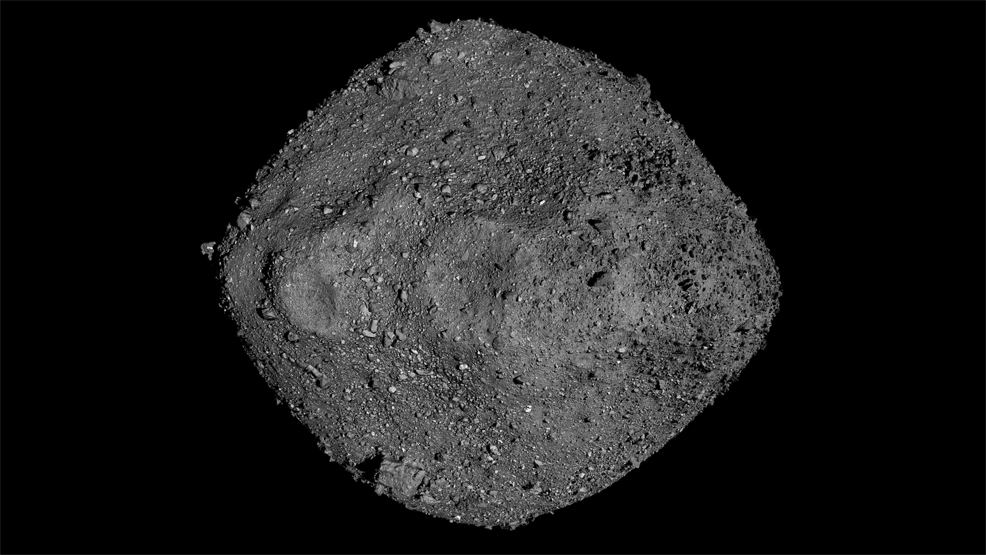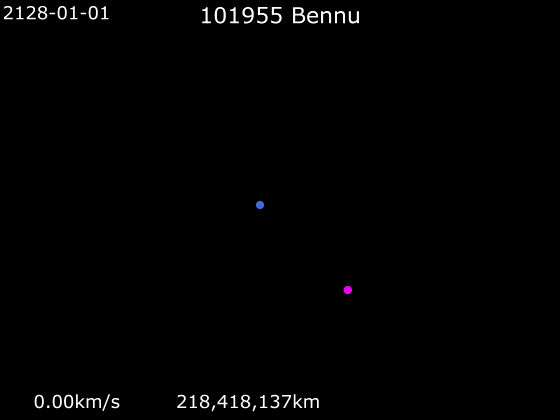
13th August 2021 Asteroid impact chances increased A study by NASA has used precision-tracking data from the Origins, Spectral Interpretation, Resource Identification, Security-Regolith Explorer (OSIRIS-REx) spacecraft to more accurately plot the route of potentially hazardous asteroid Bennu from now until the year 2300. The agency's new data, published this week in Icarus, has significantly reduced the uncertainties related to its future orbit, and improved scientists' ability to determine the total impact probability and predict the orbits of other asteroids. "NASA's Planetary Defense mission is to find and monitor asteroids and comets that can come near Earth and may pose a hazard to our planet," said Kelly Fast, program manager for the Near-Earth Object Observations Program at NASA Headquarters in Washington. "We carry out this endeavour through continuing astronomical surveys that collect data to discover previously unknown objects and refine our orbital models for them. The OSIRIS-REx mission has provided an extraordinary opportunity to refine and test these models, helping us better predict where Bennu will be when it makes its close approach to Earth more than a century from now." In 2135, Bennu will pass within half the distance between the Earth and Moon. While it cannot pose a danger at that time, scientists will need to understand its exact trajectory during the encounter in order to predict how Earth's gravity will alter its path around the Sun and subsequent return. This "gravitational keyhole" during the 2135 close approach could set Bennu on a path toward a future impact with Earth if the asteroid passes through the keyhole at a certain time. Before leaving Bennu in May 2021, OSIRIS-REx spent more than two years in close proximity to the asteroid, gathering information about its size (it is roughly one-third of a mile, or 500 metres, wide), shape, mass, and composition, while monitoring its spin and orbital trajectory. The spacecraft also scooped up a sample of rock and dust from its surface, which is being returned to Earth in 2023, for detailed scientific analysis.
Click to enlarge
"The OSIRIS-REx data give us so much more precise information, we can test the limits of our models and calculate the future trajectory of Bennu to a very high degree of certainty through 2135," said Davide Farnocchia, from the Center for Near Earth Object Studies (CNEOS), which is managed by NASA's Jet Propulsion Laboratory (JPL) in Southern California. "We've never modelled an asteroid's trajectory to this precision before." Using NASA's Deep Space Network and state-of-the-art computer models, the NASA team found that Bennu's impact chances have now increased. It had previously been given a 1-in-2,700 probability of striking Earth. The new data has now changed this to 1-in-1,750 over the next two hundred years – still unlikely but enough to warrant some concern. The researchers identified 2182 as the most high-risk individual year. Bennu is one of the two most hazardous known objects in our Solar System, the other being a 1.1 km (0.7 mi) asteroid called 1950 DA. According to Lindley Johnson, NASA's Planetary Defense Officer, a collision between Bennu and the Earth would produce a roughly 10 km (6.2 mi) crater and devastate everything within a 500 km (310 mi) radius. The kinetic energy from the impact would be 1,200 megatons in TNT equivalent, or 80 times greater than Castle Bravo, the largest nuclear weapon ever detonated by the United States. To calculate where the asteroid will be during its 2135 close approach – and whether it might pass through a gravitational keyhole – the NASA researchers evaluated various types of small forces that may affect the asteroid as it orbits the Sun. Even the smallest force can significantly deflect its orbital path over time, causing it to pass through or completely miss a keyhole.
Among those forces, the Sun's heat plays a crucial role. As an asteroid travels around the Sun, sunlight heats up its dayside. Because it spins, the heated surface will rotate away and cool down when it enters the nightside. As it cools, the surface releases infrared energy, generating a small amount of thrust on the asteroid – a phenomenon called the Yarkovsky effect. Over short timeframes, this thrust is minuscule, but over long periods, the effect on the asteroid's position builds up and can play a significant role in changing an asteroid's path. In October 2020, scientists included this effect in their calculations of Apophis, another asteroid, which they discovered might impact Earth in 2068 (that scenario has since been ruled out). "The Yarkovsky effect will act on all asteroids of all sizes, and while it has been measured for a small fraction of the asteroid population from afar, OSIRIS-REx gave us the first opportunity to measure it in detail as Bennu travelled around the Sun," said Steve Chesley, senior researcher at JPL and co-author of the study. "The effect on Bennu is equivalent to the weight of three grapes constantly acting on the asteroid – tiny, yes, but significant when determining Bennu's future impact chances over the decades and centuries to come." The team considered many other perturbing forces as well, including the gravity of the Sun, planets, their moons, and more than 300 other asteroids, the drag caused by interplanetary dust, the pressure of the solar wind, and Bennu's particle-ejection events. "The orbital data from this mission helped us better appreciate Bennu's impact chances over the next couple of centuries and our overall understanding of potentially hazardous asteroids – an incredible result," said Dante Lauretta, OSIRIS-REx lead investigator and Professor of Planetary Science and Cosmochemistry at the University of Arizona. "The spacecraft is now returning home, carrying a precious sample from this fascinating, ancient object. It will help us better understand not only the history of the Solar System but also the role of sunlight in altering Bennu's orbit, since we will measure the asteroid's thermal properties at unprecedented scales in laboratories on Earth."
Comments »
If you enjoyed this article, please consider sharing it:
|








